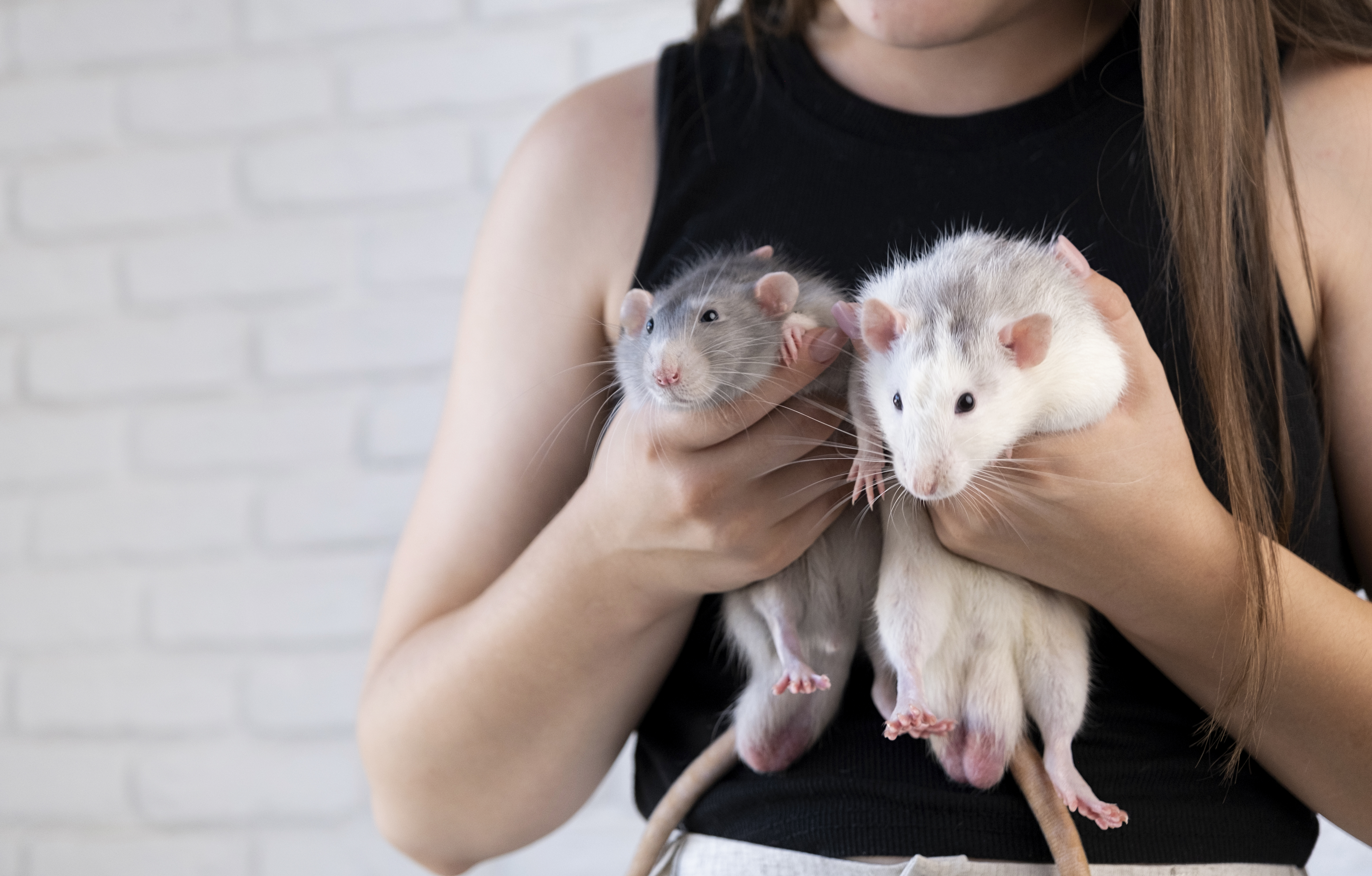How To Recognize Stress In Your Pet (And What To Do About It)
In the hustle and bustle of daily life, it's easy to overlook the subtle signs that our beloved pets might be experiencing stress. Just like humans, pets can feel overwhelmed or anxious due to a myriad of factors ranging from environmental changes to health issues. Stress in pets can manifest in various ways, often going unnoticed until it escalates into more significant behavioral or health problems. Recognizing these signs early on is crucial for providing timely support and ensuring the well-being of our furry companions. This article delves into ten subtle signals that may indicate your pet is stressed and offers soothing solutions to help them regain their happiness and tranquility. By understanding these signs and implementing the suggested strategies, pet owners can foster a nurturing environment that promotes the mental and physical health of their pets, ultimately strengthening the bond between them.
Changes in Appetite

One of the first indicators of stress in pets is a noticeable change in their eating habits. A pet that suddenly loses interest in food or begins to overeat may be experiencing anxiety or stress. This change can stem from various factors such as a new environment, a change in routine, or even the introduction of a new pet or family member. It's essential to monitor your pet's dietary habits closely and consult a veterinarian if the change persists. To soothe a stressed pet, ensure that mealtime is calm and consistent, providing a quiet space where they can eat without distractions. Additionally, consider introducing high-quality, palatable foods that cater to their taste preferences, making mealtime a more enjoyable experience. Consistency and patience are key, as a stable routine can significantly alleviate stress-related eating issues.
Increased Vocalization

Pets often use vocalization as a means of communication, and an increase in barking, meowing, or other sounds can be a sign of stress. This heightened vocal behavior may be an expression of discomfort, fear, or the need for attention. For instance, a dog might bark excessively when left alone, indicating separation anxiety. Similarly, a cat might meow more frequently when feeling unsettled. To address this, identify the triggers of their stress and work towards minimizing them. Providing ample mental and physical stimulation can help channel their energy positively. Interactive toys, regular playtime, and training sessions can significantly reduce stress-induced vocalization. Additionally, maintain a calm demeanor when interacting with your pet, as your own stress levels can influence their behavior.
Changes in Grooming Habits

An often-overlooked sign of stress in pets is a change in grooming habits. Cats, in particular, may over-groom when stressed, leading to bald patches or skin irritations. Dogs, on the other hand, might neglect grooming altogether, resulting in a disheveled appearance. These changes can be triggered by stressors such as loud noises, unfamiliar environments, or even internal discomfort. To alleviate stress-related grooming issues, create a calming environment for your pet. Regular grooming sessions can also serve as a soothing ritual, helping to reduce anxiety. Use gentle, reassuring strokes and incorporate calming scents like lavender to enhance relaxation. If over-grooming or neglect persists, consult a veterinarian to rule out underlying health issues.
Altered Sleep Patterns

Stress can significantly impact a pet's sleep patterns, causing them to sleep more or less than usual. A pet that is constantly restless or lethargic may be experiencing stress. Changes in sleep can result from anxiety, discomfort, or disruptions in their environment. To help your pet achieve restful sleep, establish a consistent bedtime routine and create a comfortable sleeping area. Ensure their sleeping space is quiet, cozy, and free from disturbances. Incorporating calming activities before bedtime, such as gentle play or a soothing massage, can also help ease stress and promote better sleep. Pay attention to any persistent changes in sleep patterns and seek veterinary advice if necessary.
Avoidance or Hiding Behavior

When stressed, pets may exhibit avoidance or hiding behavior, seeking refuge in quiet, secluded areas. This behavior is often a coping mechanism for dealing with overwhelming situations or environments. Pets might hide under furniture, in closets, or any place where they feel safe. To address this, identify and minimize the stressors in their environment. Provide safe spaces where your pet can retreat without feeling isolated. Gradually introduce them to new experiences and environments, ensuring they feel secure and supported. Positive reinforcement and patience are crucial in helping your pet regain confidence and reduce stress-related hiding behavior.
Aggression or Irritability

Stress can lead to increased aggression or irritability in pets, manifesting as growling, snapping, or even biting. This behavior is often a response to fear, frustration, or discomfort. It's important to address these signs promptly to prevent escalation and ensure the safety of both your pet and others. Understanding the root cause of their aggression is key to providing effective solutions. Avoid situations that trigger aggressive behavior and focus on positive reinforcement techniques to encourage calm and relaxed behavior. Consult a professional trainer or behaviorist if needed, as they can offer tailored strategies to manage and reduce stress-induced aggression.
Destructive Behavior

Destructive behavior, such as chewing furniture or scratching walls, can be a sign of stress in pets. This behavior often stems from boredom, anxiety, or the need for attention. Providing ample mental and physical stimulation is essential in curbing destructive tendencies. Offer a variety of toys and activities that engage your pet's mind and body. Regular exercise and playtime can help burn off excess energy and reduce stress levels. Additionally, ensure your pet has a designated area for play and exploration, minimizing the risk of damage to your home. Consistency and patience in training are vital in addressing destructive behavior effectively.
Changes in Body Language

Subtle changes in body language can indicate stress in pets. Signs such as flattened ears, tucked tails, or dilated pupils are often overlooked but can provide valuable insights into your pet's emotional state. Observing and understanding these cues can help you identify stress triggers and address them promptly. To soothe a stressed pet, focus on creating a calm and reassuring environment. Use gentle, positive reinforcement to build their confidence and provide comfort. Pay attention to their body language during interactions and adjust your approach accordingly, ensuring they feel safe and supported.
Increased Shedding

Stress can lead to increased shedding in pets, as anxiety and tension can affect their coat health. This is particularly noticeable in dogs and cats during times of stress, such as moving to a new home or changes in their routine. Regular grooming can help manage shedding and provide comfort to your pet. Use gentle brushes and soothing techniques to reduce anxiety during grooming sessions. Additionally, ensure your pet's diet is balanced and rich in nutrients that support coat health. If excessive shedding persists, consult a veterinarian to rule out underlying health issues and explore additional stress-reduction strategies.
Digestive Issues

Stress can manifest in pets through digestive issues such as diarrhea, constipation, or vomiting. These symptoms can be triggered by anxiety, dietary changes, or environmental stressors. Maintaining a consistent feeding schedule and providing a balanced diet can help alleviate stress-related digestive problems. Ensure your pet has access to fresh water at all times and monitor their hydration levels. If digestive issues persist, consult a veterinarian to determine the underlying cause and explore appropriate treatment options. Reducing stress through environmental enrichment and positive reinforcement can also contribute to improved digestive health.
Fostering a Stress-Free Environment

Recognizing and addressing the subtle signs of stress in pets is essential for their overall well-being and happiness. By understanding these signals and implementing soothing solutions, pet owners can create a nurturing environment that promotes the mental and physical health of their furry companions. Consistency, patience, and positive reinforcement are key in helping pets navigate stressful situations and regain their confidence. By fostering a stress-free environment, pet owners can strengthen the bond with their pets, ensuring a harmonious and fulfilling relationship. Remember, a happy pet is a healthy pet, and by prioritizing their emotional well-being, we contribute to their long-term happiness and quality of life.







